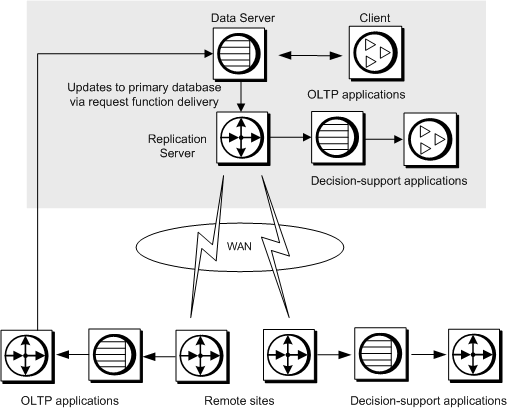The basic primary copy model is the simplest approach Replication Server uses to copy data to distribute updates from one source (primary) database to one or more destination (replicate) databases.
To ensure consistency, a source table is designated as the primary table. All other versions of the table are replicates. In this approach, replicate tables are read-only and used for operations that do not modify the data.
As updates occur at the primary table, Replication Server captures the updates and sends them to replicate data servers. In this model, clients at remote sites can also update primary data, either directly by accessing the primary database over the network or indirectly through replicated stored procedures.
If communication between the primary and destination databases fails, operations executed in the primary database are stored in Replication Server stable queues until they can be delivered to replicate sites. Likewise, operations executed remotely are held in stable queues until they can be delivered to the primary database.
This arrangement lets remote client applications take advantage of Replication Server fault tolerance while preserving the basic primary copy model.
This figure illustrates Replication Server configurations using the primary copy method of replicating data.
